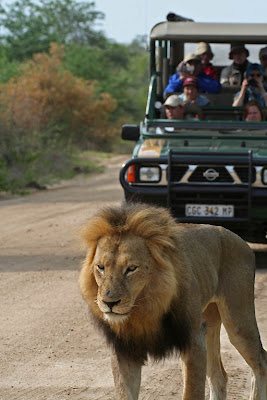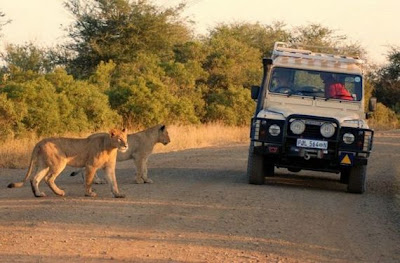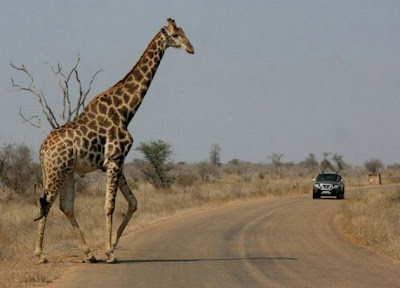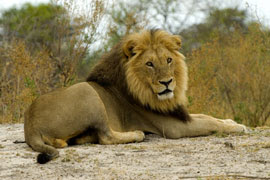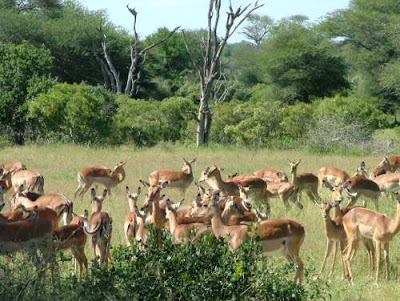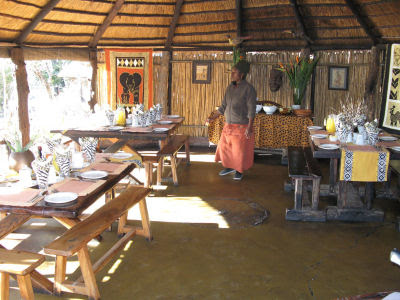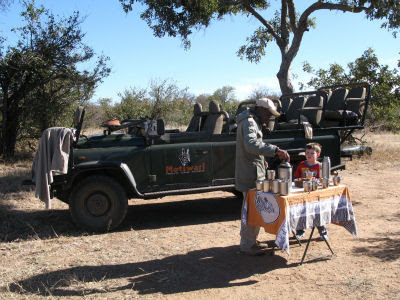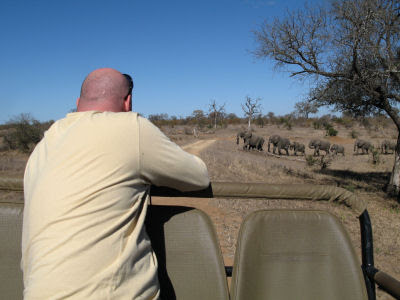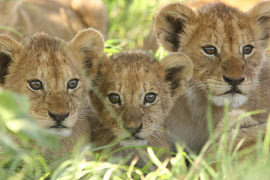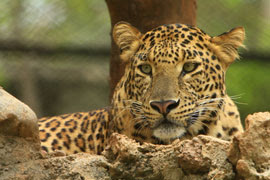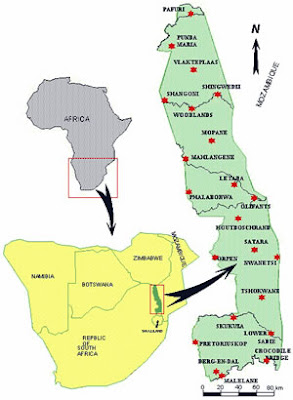A lot of national park can be found on this country. Abundant wildlife, including rare mountain gorillas, have resulted in tourism becoming one of the biggest sectors of the country's economy. Some famous national park such as Akagera National Park, Nyungwe National Park, and Parc National Des Volcans.
Parc National Des Volcans
Volcanoes National Park is situated in the Virunga Mountains in northwest Rwanda, ideal for gorilla trekking. The park protects the slopes of this magnificent mountain range and its several ecosystems, which include evergreen and bamboo forest, open grassland, swamp and heath.
Volcanoes National Park or usually called Parc National des Volcans is known as a haven for the mountain gorilla. Situated in the far northwest of Rwanda, the Parc des Volcans protects the steep slopes of this magnificent mountain range - home of the rare mountain gorilla - and the rich mosaic of montane ecosystems.
Parc National des Volcans bordering Mgahinga National Park and Virunga National Park.
What to See in Parc National des Volcans :
- The bustling market town of Ruhengeri (Musanze) has a memorable setting at the base of the Virungas.
- On the outskirts of town, the natural bridge at Musanze - a solidified lava flow - is a fascinating relic of the volcanic activity that shaped this scenic area.
- Also within easy day tripping distance of Ruhengeri are the seldom visited but lovely Lakes Burera, Ruhondo.
- Ruhengeri offers a good selection of reasonably-priced small hotels and guest houses, including the newly renovated hotel Gorilla's nest.
Visiting the Park
Visitors could also base themselves in Gisenyi or Kigali and - with an early start - head to the Parc des Volcans and Ruhengeri as a day trip
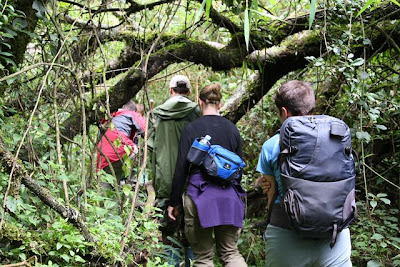
Rwanda travel blog in Parc National Des Volcans
Rwanda is a beautiful country, the roads are fantastic and the people are really friendly, the children wave and call out “how are you?”. The best day we have had on the whole trip was in the rainforest of the Parc National Des Volcans where we went gorilla trekking. With thick rainforest blocking our way, the tracker used a machete to cut down the forest to make a path, while we walked up to our knees in undergrowth and stinging nettle.
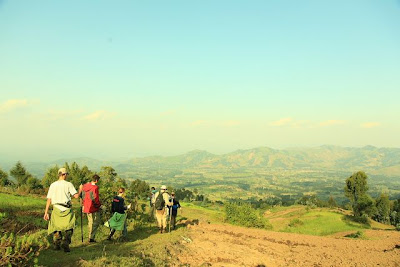
We were lucky to be visiting the Susa group, the largest and most famous of the seven habituated groups. What made our visit even more special is that this group is usually the hardest to reach, normally you need to trek for 3-4 hours up the slopes of Karisimbi at an altitude of more than 3000m. This group was habituated by the famous Dian Fossey. At one stage they were a group of 45 until they split and the group that we visited was around 28, this group included the first twins to survive as well. The gorillas are extremely important to Rwandan tourism, it makes up around 40% of the government's revenue so they are well protected from The other young twin enjoying a snackpoachers, although poaching does still occur.
It was the most incredible wildlife viewing experience and well worth the extortionate US$500 fee. The similarity to humans is hard not to notice. We spotted three massive silverbacks which came pounding through the undergrowth. The silverbacks weigh about 200kg and eat 30kg a day. On some occasions we got to within 1m of these majestic creatures. They surrounded us while they ate while the twin babies played and swung from the vines, doing back flips and kicking each other in the head. To be so close was nothing short of amazing and the maximum one hour viewing time went far too fast.
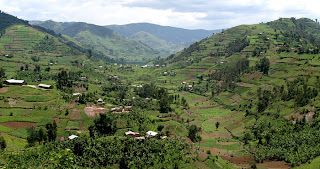
After our wonderful day we then headed to Kigali to visit the Kigali Memorial Centre, a harrowing museum exhibiting the horrific genocide that occurred here in 1994 where one million Tutsis and moderate Hutus men, women and children were massacred, butchered and raped in 100 days while the international community turned a blind eye. The last section of the museum was particularly difficult, with large photographs of children detailing their age, character, last words they spoke, favourite food and how they died - butchered, set on fire, stabbed through the eyes and smashed against a wall. A powerful message to all those who leave the museum with images that will never leave us.
Following this we then jumped on a boda boda and went to Hotel de Milles Colline of “Hotel Rwanda” fame, a luxurious hotel where we had a drink and reflected on the events that happened there. Considering the horror that occurred here only 16 years ago, the country seems to be progressing and the wounds healing, although it is still evident with huge mass graves continuing to be discovered. The Rwandans capacity for forgiveness could teach us all a lesson.
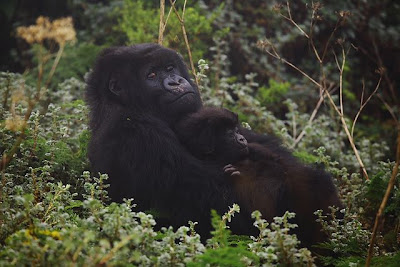
Many of Rwanda’s younger habituated mountain gorillas frequently approach human visitors.
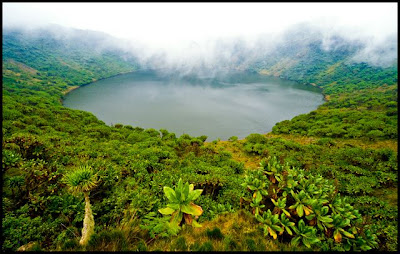
Volcanoes National Park is situated in the Virunga Mountains in northwest Rwanda and ideal for gorilla trekking.
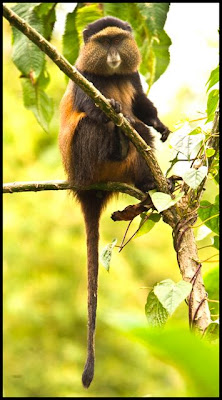
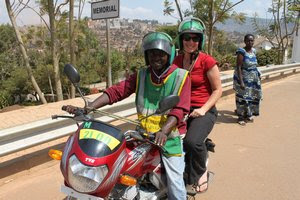
On the boda boda at Parc National Des Volcans
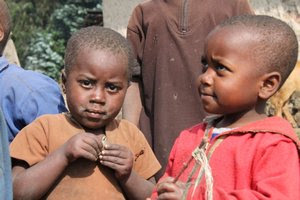
Parc National Des Volcans children
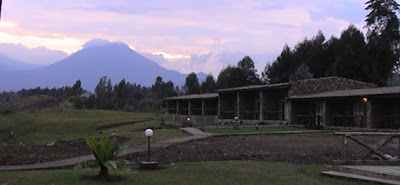
Gorilla's Nest Hotel
Gorilla Nest is situated in Kinigi at the base of the Virunga Mountains. The lodge is located 2km west of the Kinigi Park Headquarters in a lovely rural setting. There is no electricity in Kinigi so the lodge operates a generator.
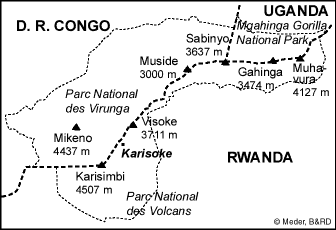
Parc National Des Volcans Map
Gorilla Tracking in Volcanoes National Park (Parc National des Volcans), Rwanda
Tracking the highly endangered Mountain Gorillas is one of the most exhilarating wildlife encounters one can have. Only an estimated 750 mountain gorillas are left in the wild, and can be found in Uganda, Rwanda and the Democratic Republic of Congo. Currently it is safe to trek in Bwindi, Mgahinga (both in Uganda), and in Parc National des Volcans (Volcanoes National Park) in Rwanda. Watching these gentle giants in their natural habitat is beyond comparison. If you wish to track gorillas, call your safari expert, toll-free 1-877-GO-ON-SAFARI (1-877-466-6723), and let us plan YOUR amazing safari to see the mountain gorillas. (It also combines easily as a three- to four day add-on excursion to any safari in Kenya or Tanzania.) - Video clip/pictures shot by Christine Eichin, Your Safari Expert, Above and Beyond Africa, in the Virunga mountains, while visiting the Sousa and the Hirwa gorilla groups mid January 2009 (Olympus SP550-UZ camera). Music: 'Twararutashye' (coming home) by Jean Paul Samputu, Album: Testimony from Rwanda.
